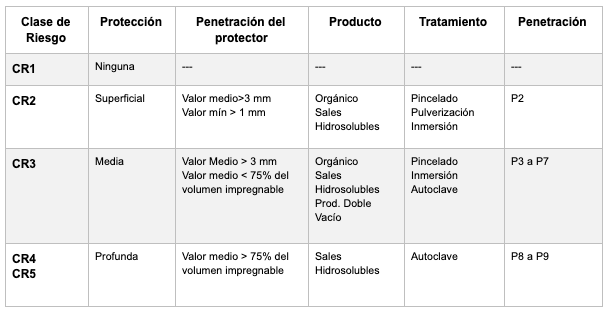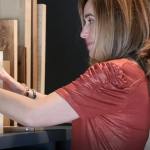Wood treatment
At Pallars fustes we are specialists in the treatment of wood. For us it is very important to carry out a good treatment of it. This way, we achieve greater durability and conservation of our works.
In this article we explain how we work at Pallars Fustes in compliance with conservation regulations.
Wood preservation
(DIN 68800 1 a 5, DIN 68354, DIN EN 350-2, DIN EN 460)
Wood and its derived materials are exposed to the attack of plant parasites, that is, fungi, and by animal parasites, insects. When infection occurs, the external appearance, efficiency and load-bearing capacity of wooden structures can be reduced to complete destruction.
In addition, fungi need organic material such as cellulose to be able to thrive especially in humid, warm and non-ventilated environments. Thus, there are different forms of mold and, normally, for it to form, its moisture content must be less than 20%.
Likewise, insects, especially house longhorn beetles, use the sapwood of wood, mainly conifers, as a source of food and nesting for their larvae. Once developed, they exit the wood through characteristic leak holes. Living trees aren’t only susceptible to being attacked by these insects, but dry wood used in construction can be too. The precondition for it to become infected is that its moisture content is greater than 10%.
Wood conservation is subdivided into two categories: restorative conservation, necessary for when the infection has already occurred, and preventive conservation, which stops the infection and destroys the conditions that favor the development of parasites.
Preventive conservation of wood (treatments)
Preventive conservation of wood can be achieved in various: wood treatments:
– Selection of wood
– Preservation thanks to good design
– Chemical preservation
Wood selection
For the selection of wood it is important to choose one that is dried well and properly stored with a moisture content of less than 20%. And, if possible, use highly durable and highly resistant wood species.
Wood preservation by design
The preservation of wood must be taken into consideration during the design phase, for example when choosing the location of the building, projecting the façade or roof eaves.
When projecting details, contact with the ground, the formation of condensation and the continued penetration of moisture by rain or splashes should be avoided from the very beginning. The wood, once wet, must be able to dry. So, the fundamental aspects of wood conservation are the aeration and ventilation of the layers of the construction elements to allow moisture to be eliminated.
Chemical preservation of wood
Fungal and insect infections must be prevented by using chemical wood preservatives.
DIN 68800-3 distinguishes between chemical wood preservatives for:
– Wooden load-bearing elements and reinforcement
– Non-bearing woods with dimensional variations
– Non-bearing woods with dimensional stability for windows and exterior doors.
The preventive conservation of the wood is obligatory in the load-bearing elements. However, chemical preservatives are only necessary for certain classes of hazards. This standard only includes recommendations for non-bearing construction elements with dimensional variations. If agreed upon by the architect and the builder, the application of chemical preservatives for the wood isn’t necessary. In general, wood preservatives are not applied to large interior surfaces. Also, chemical wood preservatives are not needed on windows and exterior doors if heartwood with certain degrees of durability is used.
Classes of risk and treatments

To avoid fungal infection, the moisture content of the wood should be less than 20%. Furthermore, adopting structural protection measures can prevent insect infestation.
At Pallars fustes we always recommend that when building with wood, priority should be given to ensuring that the design itself guarantees the conservation of the wood for the future. A suitable design shouldn’t require chemical preservatives of wood. The chemical preventive conservation of wood is considered, even by the DIN standard, as a complementary measure that should be adopted only when the choice of wood and the design are insufficient.
That is why you can trust Pallars Fustes to carry out your next project.




